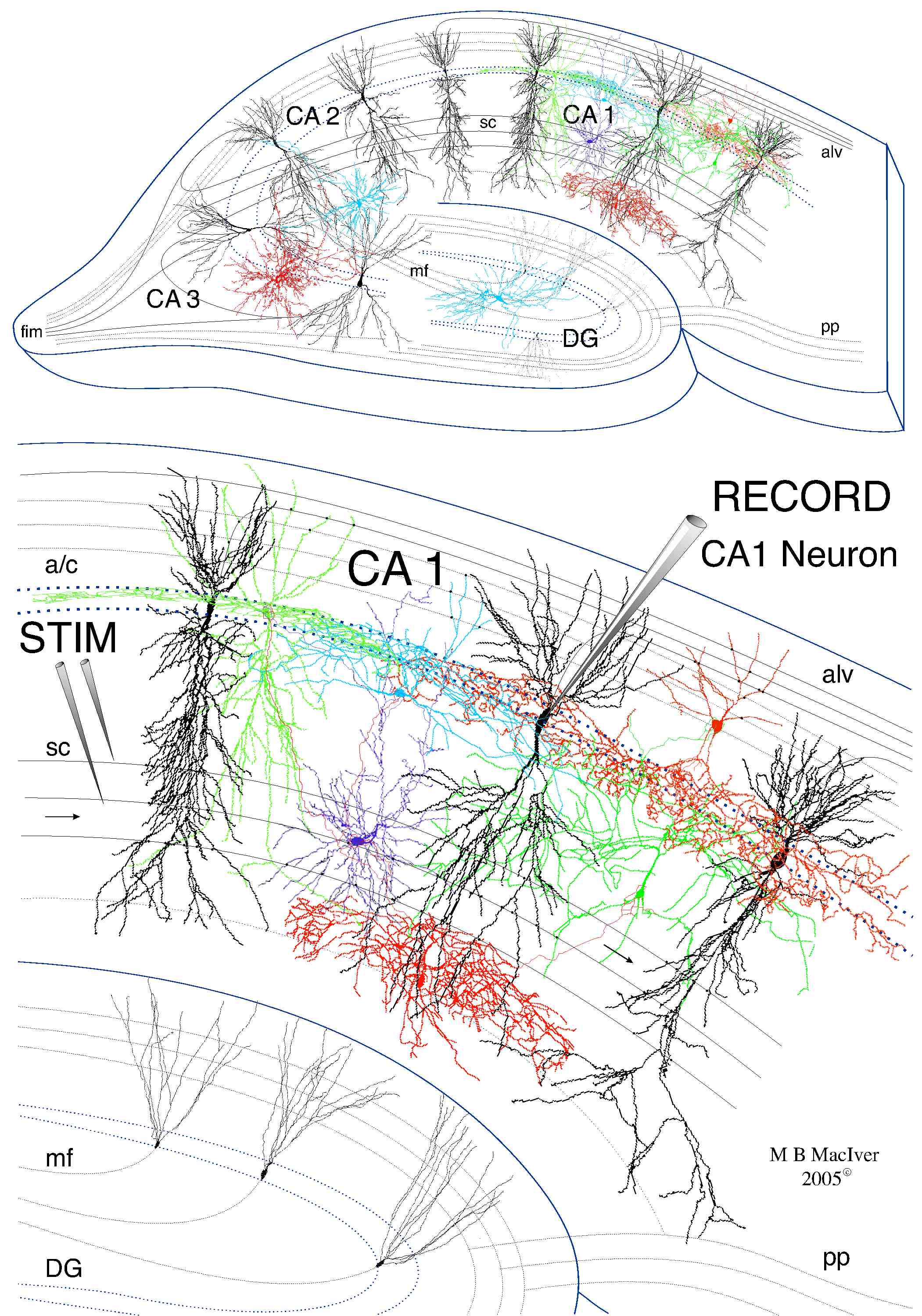
Hippocampal CA 1 pyramidal
neurons in brain slices provide an ideal model system for studying drug
effects on synaptic transmission. Intact synaptic pathways and interneuron
circuits can be preserved in thin slices (0.4 to 0.5 mm) of brain tissue
which remain viable and physiologically stable.
